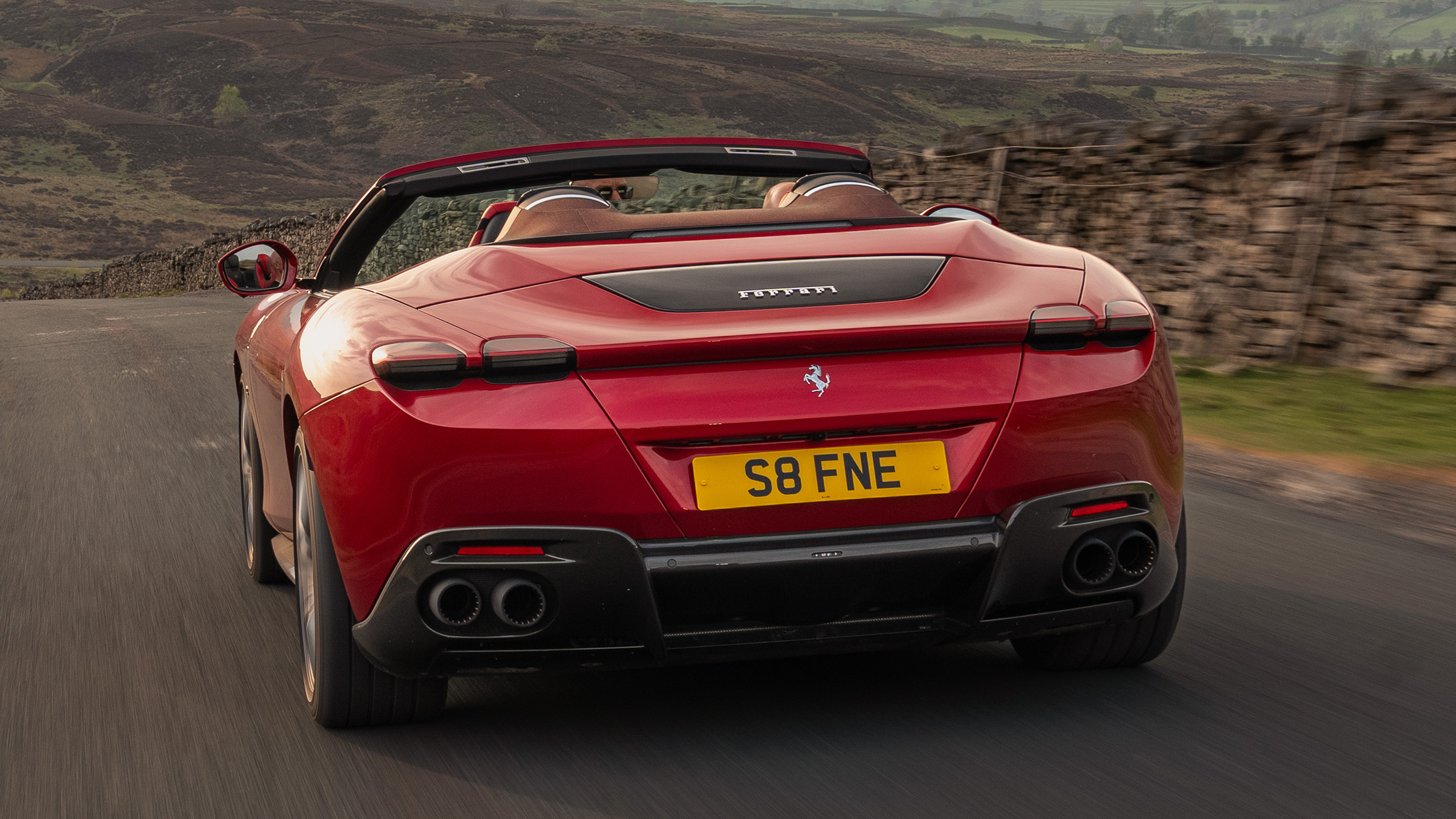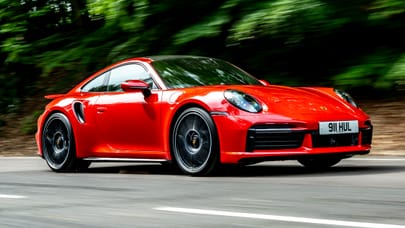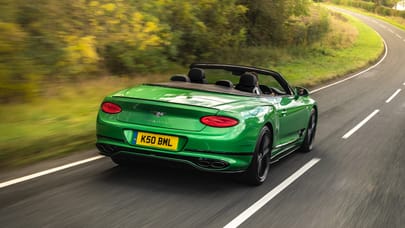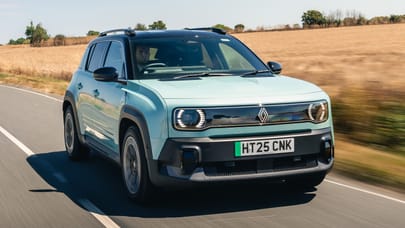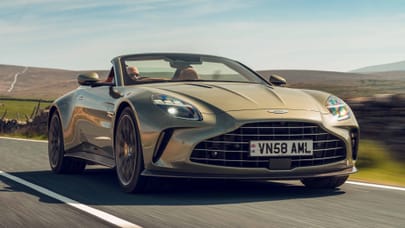
Ferrari Roma Spider review
Good stuff
Captivating to look at, charismatic to drive, clean, controlled driving manners, more relaxed than coupe
Bad stuff
Interior HMI is a nightmare to use, fuel consumption if you really go for it, eye-watering price tag and options list
Overview
What is it?
The return of a signature format for Ferrari, after a lengthy hiatus. Ferrari says it hasn’t made a front-engined Spider since the 365 GTS4 – Daytona – in 1969. That’s one of the sharpest looking cars in the entire canon, so a Roma soft-top has big hand-made loafers to fill.
Sure, we could get caught up here in the logic-free world of Ferrari’s naming policy, and you may well wonder what makes a Spider a Spider and the conspicuously front-engined open-top Portofino that this essentially replaced… something else. Whatever, Ferrari has fallen out of love with the retractable hard-top, and decided that a classic canvas roof is the way to go for the Roma convertible. Sorry, Spider.
What’s new on the Spider?
Although the Portofino managed to disguise its bulky folding roof better than most, it seems that fickle fashion has had its way and the soft top is making a comeback at Ferrari.
The Roma Spider features a classic canvas roof with five layers for improved refinement and a special weave for visual enhancement. Different colour combinations are available, exemplifying the car’s character: you can dial up the Riviera hustler look or opt for or a more technical, racy one which, Ferrari says, has an iridescent red finish that gives the roof a 3D effect.
The sills are new, there are reinforced structural elements at the rear to help boost chassis stiffness, and an integrated wind deflector in the +2 seating compartment (yeah, right) minimises turbulence inside. It does that job amazingly well. Unlike the passenger carrying abilities of the back seats, which are limited in the extreme.
The roof disappears in 13.5 seconds at speeds up to 37mph. The weight penalty over the coupe is a tolerable 84kg.
Does the Roma Spider look as good in the flesh as it does in the images?
Absolutely. In fact, roof down, the Spider might even be prettier than the coupe. Ferrari, perhaps riskily, invokes the spirit of la dolce vita around this car, but there’s no question it’s a classy, glamorous looking thing. We’ve got used to the perforated, body-coloured grille and chiselled nose, but the camera sensor looks like a crude afterthought.
Surely they could have integrated that more successfully? The front wings, which are visible from the driver’s seat (a good thing, as this makes the car easier to place on the road), and bonnet hump in particular are evocative.
And from behind?
We could look at the view across the rear three-quarters all day long. There’s a genuine barchetta feel from some angles (echoing the late Forties 166 MM, Ferrari’s first big hit). The cabrio's rear screen has been slightly reduced in size so it folds away beneath the tonneau cover when the roof is lowered. Advanced lighting tech gives the Roma Spider a fresh graphic dynamism at the rear, although the prominence of the headrests, the rears in particular, spoils the silhouette’s purity a little. Not a problem its rivals that sacrifice the useless rear seats suffer from.
There’s exterior aero efficiency, too, thanks to vortex generators and a deployable rear spoiler, with Low Drag, Medium Downforce and High Downforce settings. Nothing more than a pop-up tray on the boot, it does look daft though. The amounts generated are modest by Ferrari standards, but no-one is ever going to track day their Roma Spider. Are they?
That’ll be the day. What’s it going to cost me?
The Roma Spider costs at minimum £210,838, some £28k more than the coupe. And the options are… unlimited. But it was hardly going to come cheap, was it? Still the red car in the pictures here has a list price of over £323,000. And this, don’t forget, is essentially Ferrari’s entry-level car.
To give you some perspective there, an Aston Martin Vantage Roadster will set you back from £185k before options. A Porsche 911 Turbo S cabrio, from £190k. And a Bentley Conti GTC, from £201k. However you look at it, the Roma demands top money.
Is the Roma better than those?
It’s the most evocative and romantic of them, but the new Vantage roadster is more accessible and entertaining, the 911 is a better driver’s car and the Bentley more luxurious and capacious. The Aston follows the Ferrari template most closely and we rate it a little more highly.
What's the verdict?
This is truly a Ferrari for all seasons. Rather than compromising it, the absence of a fixed roof actually adds another dimension. Reverting to an old school soft-top plays perfectly to the Roma’s stylistic strengths, and as modernist as it is, this is as pretty a car as Ferrari made in recent years.
And although it’s still hugely fast, the Spider is dynamically less highly strung than the Coupe. Clever aero suppresses the buffeting when the roof’s down, but you’re less inclined to drive it as hard as the Coupe anyway. No Ferrari is relaxed as such, but the Roma Spider arguably does its best work at a less frenzied pace.
Which you’ll need to be at to stand any chance of operating the cabin tech, the Roma’s greatest let down. Look past that though, and this is a fabulously seductive car, a little softer in character than the Coupe but still laser-focused in its intent – and still harder edged than rivals.
The Rivals
Trending this week
- Car Review
BMW iX3






